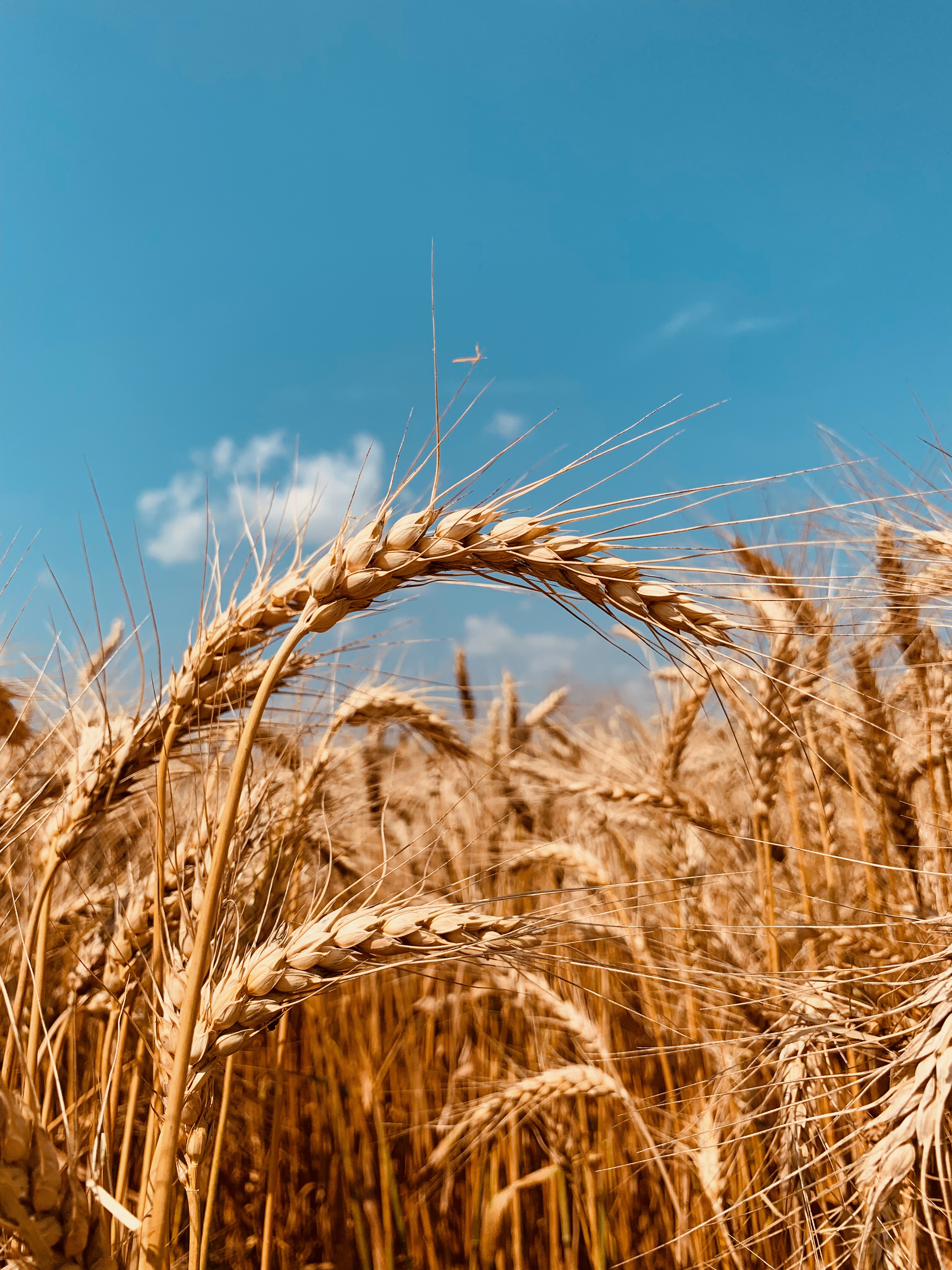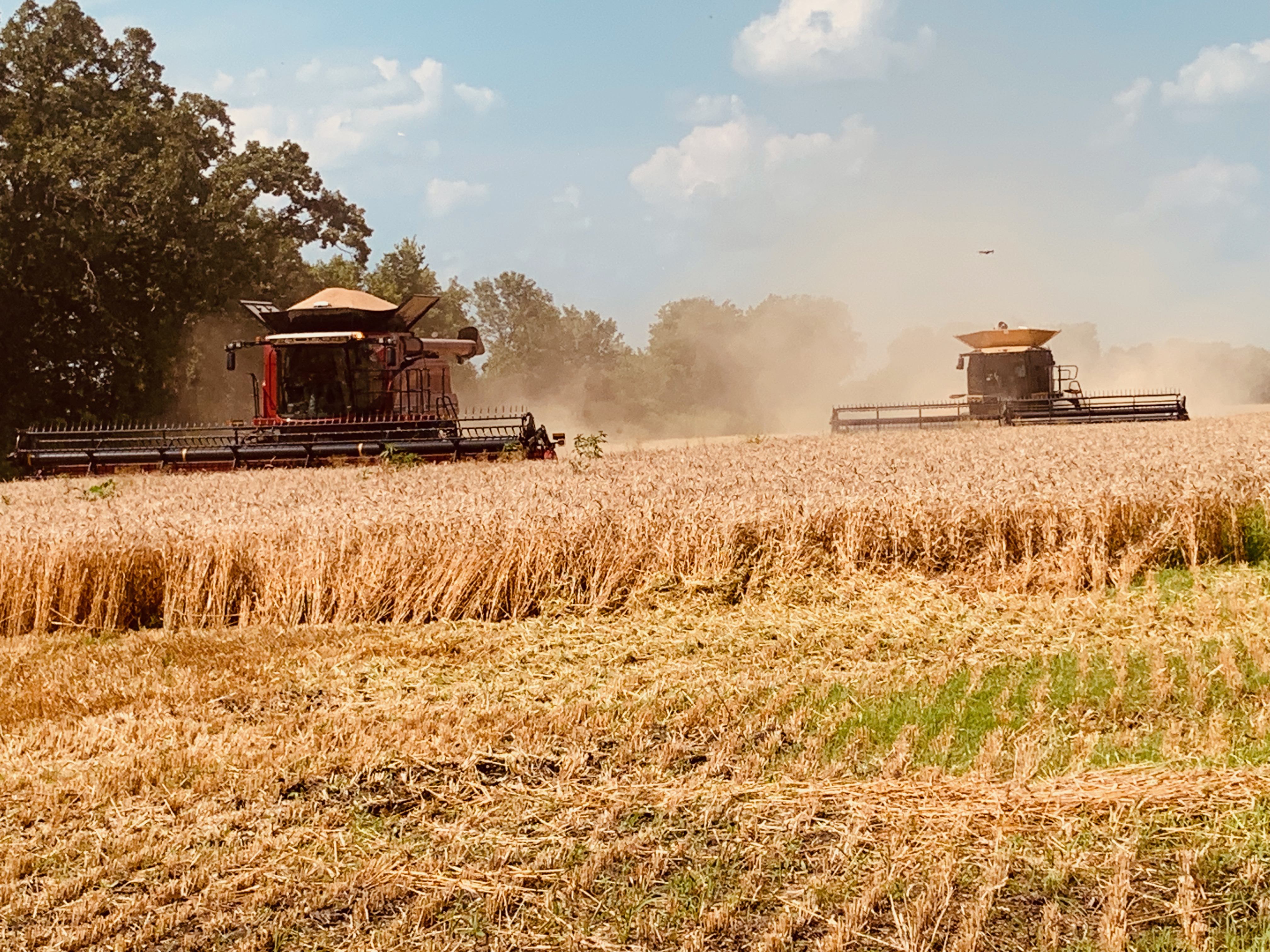| Scientific name: | Triticum aestivum L |
| Cultivars: | Many classes of wheat:Hard red spring wheat (mainly in northern Great Plains; high quality bread)Hard red winter wheat (mainly in WA, MT, CO KS, NE)Soft red winter whea (KS, MO, IL, IN,OH)Soft white wheat (Oregon, Washington, Idaho)Durum wheat: has low gluten, not for bread making, used for pasta (semolina), (ND, SD, MT, MN) |
| Origin: | South East Turkey |
| Growth Habit: | Bunch type; Upright tillers; long-day plant, where long days speed time to flowering |
| Life Cycle: | Annual |
| |
| Use |
| |
| Production: | 1-4 tons DM by next spring (winter wheat) for grazing or hay. |
| Nutritive Value: | Good as long as harvest is not beyond hard-dough stageLimited moisture favors protein concentration, 11.5 to 14% |
| |
| Identification |
| |
| Seed Head: | Spike; awns not as straight as in Rye or Barley |
| Seed: | ribbed front, and smooth back60 lb/bushel20,000-24,000 seeds/lb |
| Shoot: | Hollow stems at internodes; nodes can be pubescent (hairy) or not (glabrous) |
| Leaf: | Leaf blades are smooth near the base |
| Auricles: | Prominent (less than barley) and hairy |
| Ligule: | Membranous |
| |
| Adaptation |
| |
| Soil: | Well drained, silt and clay loam |
| pH: | 7 to 8.5; does not tolerate acid soils well |
| Moisture: | Grown in < 30 inches (in US); it can grow from 10 to 70 inches
No tolerance to flooding |
| Temperature: | Adapted to cold well, but it can grow in hot climates if humidity is not too high.Plants with 2 or more tillers and good crown will tolerate cold better> 50°F at crown will loose winter hardening hardinessWarm, humid conditions favor disease developmentWinter kill of crown at 3 to 4°FMay winter kill at 10-20°F without snowWith snow cover it may withstand |
| Other: | |
| |
| Establishment - Management |
| |
| Seeding rate: | 100 lb/acre (1.6 bu/acre) |
| Seed cost: | |
| Planting date: | Spring wheat: early in the spring; winter wheat: early in the fall for good establishment before winter. |
| Planting depth: | 1.5 to 2 inchPlanted too shallow crown will develop too close to soil surface and becomes susceptible to winter killCrown should develop 1 inch below soil |
| Frost seeding: | Spring wheat, not winter wheat. |
| Fertilization: | N provides the greatest response and determines N concentration 40-100 lb N/acre are common; too much N will delay maturity, cause plants to lodge, and decreasing yield P and K fertilization according to soil testSpring wheat: at planting; winter wheat: split application is used, with some N, all P and K applied prior or at planting, and rest of N in grown season to guarantee good N levels during blossoming (for adequate protein) |
| Grazing: | |
| Hay: | Used as emergency crop when alfalfa and clovers fail. |
| |
| Notes |
Straw after combining is valued for bedding
Preferred by horses over oats |
| |
| Photos |
|

Wheat seedhead (spike)

Wheat field late July

Wheat combine harvest for grain, late July
|



